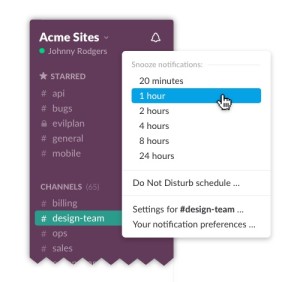 tl;dr: The pomodoro technique breaks down periods of work into short (typically 25-minute) intervals called “pomodori” (from the Italian word pomodoro for “tomato” – the shape of the kitchen timer creator Francesco Cirillo originally used), separated by brief breaks.
tl;dr: The pomodoro technique breaks down periods of work into short (typically 25-minute) intervals called “pomodori” (from the Italian word pomodoro for “tomato” – the shape of the kitchen timer creator Francesco Cirillo originally used), separated by brief breaks.
The method is based on the idea that:
- Multitasking, context switching, distractions and interruptions destroy productivity, ruin focus and disrupt flow
- Frequent short breaks improve mental agility
Five Easy Pieces
There are five basic steps to implementing the technique:
- Decide on the task to be done
- Set a timer – again, typically 25 minutes (see Variations below)
- Work on the task (and only that task) until the timer rings
- Take a short break (3-5 minutes)
- Every four “pomodori” take a longer break (15–30 minutes)
Deciding on the Task to be Done
- Use a task manager. Omnifocus is pretty great, imo. (And here’s a list of 39 other “To Do” managers you can consider…). Or GitHub issues, or JIRA subtasks .
- Break large demanding tasks down into smaller steps, each with a clear “Definition of Done”
- Periodically set/adjust priorities and contexts for these tasks (Omnifocus makes this pretty seamless)
- Once you have a list of tasks, start completing them in order of importance, one pomodoro at a time.
- Record new to-dos as they come up.
Dealing with Distractions and Interruptions
During a pomodoro, you can only work at the task at hand.
No other tasks are allowed.
Make a small oath to yourself: “I will spend 25 minutes (or whatever interval you’ve set) on this task and I will firewall my attention.”
Firewall
Choose any or all methods you need to build an effective firewall:
- Shut off all potential distractors – set your hipchat/slack status to “away” Hipchat will allow you to set a custom message like “back @ 10:30” or “DND” – and Slack added in Dec 2015 auto and manual DND features:
![]()
- Turn off your notifications. (Make responding to social media, emails, etc., its very own pomodoro.)
- Sequester your self. Hang a sign. Find a quiet room. Put your headphones on.
- For more ideas: see Do Not Disturb as well as The Power of “No”
25 minutes is a small enough time that people who need you can come back during your break, and it’s usually long enough to get significant work done.
It is also long enough to gain coherence around the work being done – aiding memory and reducing transaction costs for context switching.
Corollary: Respect other’s firewalls. What’s important to you may not be to them….
Interrupted Anyway? Negotiate!
When interrupted during a pomodoro instead of task switching, negotiate. Don’t hesitate to say politely, “Not now, can I get back to you in X minutes…?” And then simply record and postpone the new task or ask the interrupter to record it for you. Most often, things can wait.
If you cannot postpone, then your current pomodoro must be abandoned.
A pomodoro is indivisible. You are focused on working on one “thing” – one context, one “to do.”
Give it your full, undivided attention.
Breaks
It is really important to disengage from work to recharge. Doing so eliminates the “running on fumes” feeling…
Stretch. Refill your drink. Take a bio break. Get away from your workstation. Your brain will thank you later.
For more break ideas see:
On the longer breaks, do something totally unrelated to your current list of “tasks.”
Eat. Snack. Take a little walk. Change your environment. Rest. Meditate.
Your brain will use this time to assimilate new info.
Variations on Interval Length
What, you say, “25 minutes is just too short for me to be effective….”?
There’s no hard and fast rule on the duration of a pomodoro.
If you require longer sessions of focus, (and don’t have a short attention span), try 50 minutes at a stretch.
Or do 35 minutes during times of day when your focus is better, and 20 minutes when you know your focus is decayed. Or increase the time interval for tasks you find inherently engaging (but still take a five-minute break at the end); decrease the time for those tasks you want to avoid or consider lest engaging.
The key is to know your own limits – when do you start to feel fatigued? When does your attention start to drift?
Simply set your pomodoro to an interval a little bit less than that…
What, you say you can’t do this all day long?
No problem, some people use one or two pomodori just to get started at the beginning of their day.
They do the most important thing(s) first.
Once you have that momentum going, just free flow the rest of the day.
And maybe one pomodoro to close out the work day – organizing things for the following day.
Want more?
- Pomodoro Technique Illustrated
- Pomodorotechnique.com
- http://www.getconcentrating.com/
- https://zapier.com/blog/best-todo-list-apps/

